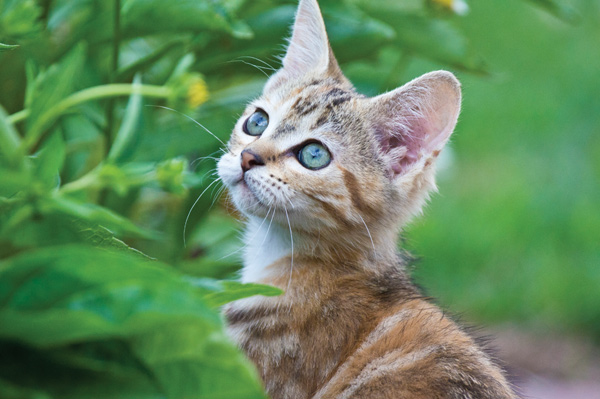Many houseplants can be toxic to cats; healthy alternatives

By SARA SCUDIER
OSU Ext. master gardener volunteer
Cats are now the most common pets in the United States, with more than 85 million owned cats reported in a recent survey.
About one-third of U.S. households now have at least one cat living in them, and more than 50 percent of these homes have more than one.
Clearly, we love our cats, and we are concerned for their welfare and happiness.
Our modern-day house cats still retain many wild behaviors, however. Eating plants seems to be one of them.
This annoying problem not only disfigures the plants, it may be hazardous to the pet’s health. Many plants can harm animals. The American Society for the Prevention of Cruelty to Animals website lists lilies and other plants toxic to animals.
Plants in the Lilium genus, such as Easter lilies and “Stargazer” lilies, are highly toxic to cats and, when ingested, will cause kidney failure. Sadly, death is almost inevitable once the cats show symptoms of poisoning, include vomiting, lethargy and lack of appetite.
Oleander and dieffenbachia are also very toxic. Other plants, while not fatal, can make your cat ill. For your cat’s sake, you should know which plants are poisonous to animals. Contact your veterinarian immediately if you suspect your pet has eaten a toxic plant.
If your cat insists on eating your indoor plants, consider growing a container especially for them. Cat grass, sold at pet stores and garden centers, is a healthy alternative to turf grass and other plants.
Most commercially available cat-grass seed is common oats — Avena sativa — however, it may also be packaged as a blend of oats, barley, wheat and rye grass. You can also buy seed at the garden center.
Cat-grass seed can be planted indoors anytime of the year. Sow the seed in a container filled with fresh potting soil. Sprinkle the seeds generously and uniformly over the surface and cover them lightly with more soil. Water the soil thoroughly and set the container where it will receive bright light.
If you have a grow light all the better, but any bright location will work. When the leaf blades are about 2 inches tall, place it a bright location where your cat will find it. Start new containers of cat grass every few weeks to guarantee a fresh supply. Cat grass will not only satisfy a cat’s craving for green, it will satisfy a gardener’s itchy green thumb in the middle of winter.
If your houseplants continue receiving your cat’s unwanted attention, you should try to deter your cat by placing plants out of reach, or spraying them with a product such as Citrus Magic.
For lists of houseplants and their toxicity to pets, visit go.osu.edu/houseplantlist.
 43
43

